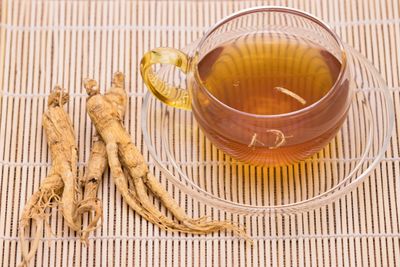What is Ginseng Used For?
Ginseng remedies are often seen in holistic or natural health food stores. It may be raw but is generally sold in a drink or capsule. In Asian markets, it is often found dried. There are many purported uses for ginseng, but no actual medical evidence of its effects. Nevertheless, ginseng remedies are big business and most studies seem to agree it actually can help reduce the incidence and duration of the common cold. Depending where you live, ginseng uses can run the gamut from aromatherapy to edibles and on into other health management. In Asia, it is often found in tea, soft drinks, candy, gum, toothpaste and even cigarettes. In the U.S. it is primarily sold as a supplement, promoted for its enhancing properties. Among the benefits touted are:
Increased cognitive ability
Enhanced immune system
Prevention of respiratory symptoms
Improved physical performance
Lower blood pressure
Protect against stress
More unsubstantiated uses for ginseng claim it is effective protecting the body from radiation, quells the symptoms associated with withdrawal, stops blood from thickening, and strengthens adrenal glands.
How to Use Ginseng
There are no physician listed recommendations for using ginseng. In fact, the FDA has numerous listed health fraud warnings and it is not a recognized drug. It is approved as a food, however, and the National Institutes of Health released a favorable 2001 report indicating the plant did have antioxidant benefits. Most users take it in the form of a supplement, generally dried and crushed in a capsule. Alternative medicine publications recommend 1 to 2 grams (.23 to .45 tsp) of powdered root 3 to 4 times per day. It is recommended for use only for a few weeks. Side effects can include:
irritability
dizziness
dry mouth
bleeding
skin sensitivity
diarrhea
delirium
convulsions and seizures (extremely high doses)
Tips on Harvesting Wild Ginseng
When foraging, always check with your local forest management officials to make sure it is legal where you are harvesting. You will find ginseng in shaded sites where broad leaf deciduous trees are prominent. The soil will be humic rich and moderately moist. Ginseng must be harvested only when it is old enough. Ideally, the plant should have attained the 4-prong stage of growth where it has had time to seed. This is indicated by the number of leaves which are compound. American ginseng achieves the 4-prong stage in 4 to 7 years on average. Dig carefully around the base of the plant so the fine hairs on the roots are not damaged. Only harvest what you can use and leave plenty of mature plants to produce seed. Disclaimer: The content of this article is for educational and gardening purposes only. Before using or ingesting ANY herb or plant for medicinal purposes or otherwise, please consult a physician, medical herbalist or other suitable professional for advice.
